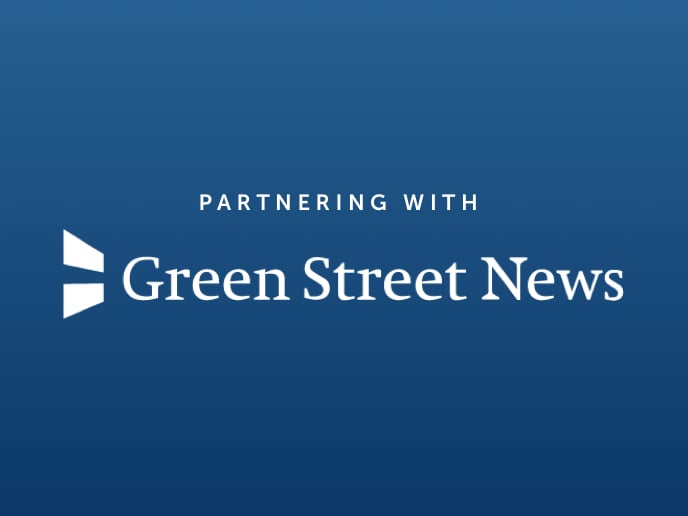Liberation or Aberration: What’s Shaping the Value-Add Opportunity in European Real Estate?
Uncertainties remain on the horizon—but this is extending an already attractive value-add opportunity to invest at the start of a new property cycle.
2025 was meant to be the year where the European real estate recovery was to begin in earnest, with inflation tamed, interest rates coming down, and European economic growth accelerating. But then President Trump announced widespread ‘reciprocal’ tariffs on U.S. imports—and this dented investor appetite once again. With uncertainties on the horizon, suppressed pricing across European commercial real estate is likely to prevail a little longer—which, as a result, extends an already attractive value-add opportunity to invest at the start of a new property cycle.
Cyclical Themes
Geopolitical risks remain, but property market cycle risks are low. Put simply, the trough of the European real estate cycle passed some time ago as the economy pivoted away from the need for higher interest rates to combat surging inflation. The direction of travel for interest rates in Europe over the next few years remains skewed toward further cuts. Approaching interest rate cuts support the pricing of core stabilized properties—and therefore presents favorable exit liquidity for refurbishments, let-ups, and other value-add property tactics.
Trade war fears are likely to weaken sentiment and potentially occupier conditions. Yet with the notable exception of perhaps China’s U.S. imports, this could prove to be relatively short lived with Trump walking back a number of the initial aggressive negotiating positions—with a number of bilaterial deals in the pipeline. It’s also worth pointing out that recent prime European rental growth has been running at a robust 4-5% per annum against a backdrop of a sluggish European economy, due in no small part to chronic shortages of modern stock.1 Some occupational risks can be mitigated by focusing on markets and sectors that are positioned to benefit from three long-term structural megatrends:
1. Urbanization
The number of urban dwellers—already accounting for 56% of global population—is forecast to double to over nine billion people by 2050.2 The dearth of free-market and subsidized housing supply in many western European cities, compounded by restrictive construction policy, provides sustained upward pressure on rents. Student housing represents a ‘micro version’ of the problem. While Europe is home to roughly half of the top globally-ranked universities, there is a chronic undersupply of modern fit-for-purpose student accommodation, particularly in Italy and Iberia.3
Figure 1: Number of Students to Number of Beds
 Source: CBRE. As of May 31, 2023.
Source: CBRE. As of May 31, 2023.
2. Technology
Technology’s impact can be seen in how fast-growing e-commerce is changing supply chains. E-commerce, which accounts for 26% of sales in the U.K., requires large warehousing space near urban areas to satisfy customer demand for quick deliveries (Figure 2). Supply of warehousing, however, is constrained. For instance, while London’s population has grown by 32% since 2000, industrial land has shrunk by over 40%.[4] This dynamic presents attractive opportunities in income-producing urban logistics and industrial outdoor storage (IOS). Similar situations across Europe have resulted in tight supply of modern warehouse stock, which is likely to remain low as construction continues to lag growing demand. This backdrop provides an opportunity for new development in sub-markets where supply / demand dynamics are most acute.
Figure 2: U.K. Online Sales
 Source: ONS. As of December 31, 2024.
Source: ONS. As of December 31, 2024.
3. Sustainability
Regulatory and social pressures have made sustainability a priority issue, with the most sustainable buildings attracting rental and cap rate premiums. In Europe, in particular, Google Trends data shows that interest in ESG factors remains high (Figure 3). Sustainability has long been integrated in our value-add approach as an alpha generator due to its proxy for asset quality, which aligns with long demand drivers—we aim to achieve the highest possible energy efficiency whenever we retrofit or redevelop assets.5
Figure 3: Internet Search Popularity & “ESG”
 Source: Google Trends. As of April 30, 2025.
Source: Google Trends. As of April 30, 2025.
Takeaway
While geopolitics remain highly challenging, real estate pricing is suppressed—and the ongoing uncertainties have extended the opportunity to acquire at the start of a new property cycle in Europe. It is more crucial than ever to tap into sectors that are well-positioned to benefit from the strongest structural tailwinds—logistics and living, in particular—while also being prepared to capitalize on tactical opportunities via market dislocation and distress. Overall, we remain convinced that the current vintage will be a compelling one for European value-add.
1. Source: Cushman & Wakefield. As of April 2024.
2. Source: The World Bank. As of April 2024.
3. Source: Times Higher Education rankings. As of June 2023.
4. Source: The Industrial Land Commission. As of January 2022.
5. Source: Barings. As of May 15, 2025.




